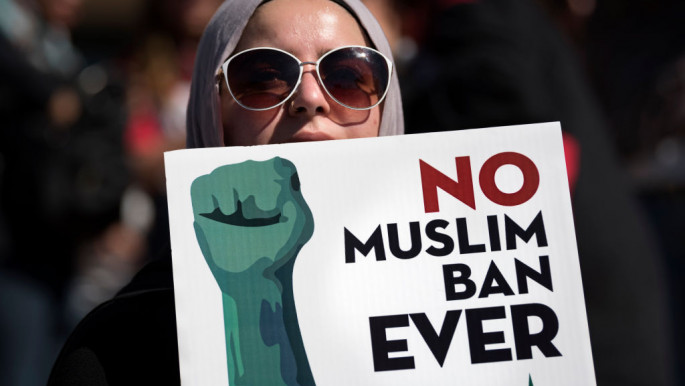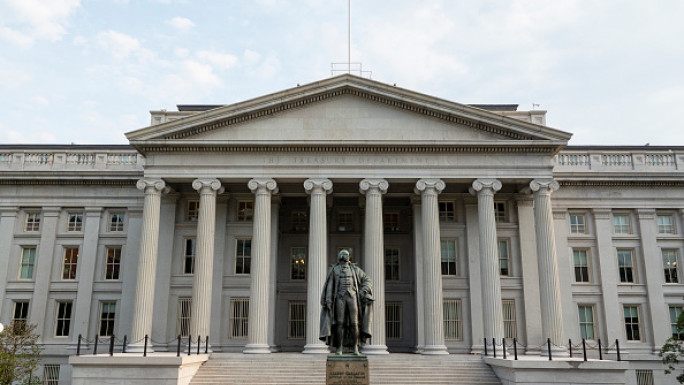
Illegal, unconstitutional or just racist? Trump's travel ban heads to Supreme Court
The order aims to bar citizens of eight countries from entering the United States (we'll call this directive "EO-3"). EO-3, for many observers, is no more than a ban on Muslims entering the United States, despite the fact that North Korea and Venezuela are lumped into the same group with six Muslim-majority states (Iran, Syria, Yemen, Somalia, Libya, and Chad, though the latter was removed from the list in recent months).
EO-3 was issued in September of 2017 after two previous immigration orders were struck down as unconstitutional by multiple state and federal courts. However, in October of that same year, a federal judge in Hawaii ruled in favour of a coalition of plaintiffs that sued the Trump administration on the basis of violating immigration laws and the US Cconstitution.
The decision effectively barred the administration from enforcing EO-3. The administration appealed the decision to the Ninth Circuit Court of Appeals, which sided with the lower court's decision, and after another appeal, secured a hearing before the Supreme Court.
Interestingly, the Supreme Court ruled earlier this year that the Trump administration could enforce EO-3 and prevent those eight countries' citizens from entering the United States until the matter was officially adjudicated, bringing us to April's hearing.
What is this case really about?
On its face, Trump v. Hawaii is about whether or not the president of the United States is discriminating against immigrants based on their nationality and religion.
 |
The Establishment Clause makes it unconstitutional for the government to favour one religion over another |  |
The plaintiffs - which included the state of Hawaii as a whole, a number of individual US citizens whose family members were prevented from reuniting with them in the states, and an organisation called the Muslim Association of Hawaii, Inc. - allege that Donald Trump's own statements, both as a candidate and since taking office, illustrate that he intended to use EO-3 to bar Muslims from entering the United States.
Under the US Constitution's First Amendment, such a move would likely violate a provision known as the Establishment Clause, which essentially makes it unconstitutional for the government to favour one religion over another, or no religion. As for bias against admitting immigrants based solely on nationality, that seems illegal under a US law called the Immigration and Nationality Act.
 |
|
| 'The No Muslim Ban Ever' rally in Los Angeles was organised by the Council on American-Islamic Relations in response to the Trump administration's third iteration of the of the travel ban, October 2017 [AFP] |
While this is problematic in its own right, the case is much more than when you venture below the surface.
Indeed, the overwhelming majority of the argument filed by Hawaii et. al. focuses not on the potential violation of the Establishment Clause, but whether the president, in issuing EO-3, is exercising power that is not rightfully his.
Essentially, the attorneys for the plaintiffs argue that Congress - which has purview of the domestic issue of immigration law - did not give the president the authority to act unilaterally to impose such broad immigration standards.
Further, even if members of Congress did intend to delegate the legislative branch's authority to the executive branch, the attorneys argue that it is the Supreme Court's greatest responsibility under the US Constitution to overturn such a move as it would destroy the basic "separation of powers" scheme that the US federal government is founded upon.
What questions does SCOTUS want answered?
As the sides prepare to argue their cases before the Supreme Court, four questions have been at the forefront of this issue.
Twitter Post
|
First and foremost, the sides are trying to convince the justices whether or not this case is even justiciable; or in other words, does the judicial branch of government have any role at all in settling this dispute?
Sometimes in legal disputes, the Supreme Court sees the issue in question as a "political question", meaning it must be settled between the legislative and executive branches and that the judicial branch has no say in the matter.
Essentially, that is what the justices want to know here: Is the Supreme Court even responsible for ruling on this issue?
If the Court decides it is, then the next question is whether EO-3 is lawful, and if the president legitimately dictate the terms of immigration through executive order? This question will be considered in the context of the Immigration and Nationality Act and whether sections of the law allow the president to make immigration decisions as the Trump administration has with EO-3.
However, there is the separate constitutional question of whether EO-3 violates the Establishment Clause, and this question will also have implications for the legality of the president's order.
Lastly, if the Court decides that the plaintiffs are correct and that the Trump administration overstepped in issuing EO-3, it then will need to decide the appropriate remedy to the issue.
 |
The attorneys for Hawaii et. al. contend that the administration acted beyond the authorities granted by Congress |  |
As the District Court of Hawaii and the Ninth Circuit Court of Appeals decided, the appropriate remedy was a nationwide injunction to block the federal government from enforcing EO-3.
Trump administration lawyers argue this is too broad while attorneys for the plaintiffs argue it is the only sensible resolution. Ultimately, the Court will have to decide if the national injunction on EO-3 is overly broad.
What to expect
Generally, the Supreme Court does not like to weigh in on cases that set precedents that limit the president's power to protect the United States. The attorneys representing the federal government understand that, and have argued that the plaintiffs have no standing to sue over EO-3 because they are not adversely effected and that this is a matter of US foreign policy, something explicitly delegated to the president under the Constitution.
 |
It is difficult to argue that EO-3 was not at least constructed with religion in mind |  |
The plaintiffs argue - rightly so, many would agree - that this is not a foreign policy question, but one of immigration law, which is a domestic matter explicitly granted to Congress under the very same Constitution.
It seems that, with two favourable court decisions on their side and compelling arguments about how the Muslim Association of Hawaii, the state of Hawaii itself, and the individuals that were deprived of reuniting with their families have, in fact, been adversely affected by the ban, the Supreme Court will likely see this challenge as justiciable.
Twitter Post
|
When it comes to assessing the legality of EO-3 and whether it is within the authorities of the president as the chief executive of the United States, the Court's determination is less predictable.
The court has a 5-4 conservative leaning, with a few of those conservatives being "literalists" who prefer to look only at the reading of laws, not the contexts from which they were derived and executed.
In this case, the plaintiffs could have some difficulties finding sympathy for their arguments. Indeed, under the aforementioned Immigration and Nationality Act, Congress outlined a set of immigration principles for which it expected potential immigrants to meet before receiving visas, but it also carved out space for the president to act as he sees fit, in defense of the nation's best interests.
The administration is arguing that it simply operated within the authority allowed by Congress to protect the United States and some justices could find that reasonable. However, the plaintiffs offer legitimate concerns about what precedent that argument could set.
The attorneys for Hawaii et. al. contend that the administration acted beyond the authorities granted by Congress because, they argue, EO-3 circumvents Congress' detailed immigration system completely. Though it is a burdensome argument, the bulk of the plaintiffs' case is that if the courts side with the administration, then it ultimately destroys the legislative branch's check on the executive.
As for the constitutionality of EO-3 and whether or not it violates the Establishment Clause, the justices' political leanings will again play a role. The administration will argue that the Establishment Clause only protects US citizens who are directly harmed by a certain law or action, and since EO-3 deals with foreign nationals, then the constitutionality is not even in question.
Hawaii et. al., on the other hand, will argue that the Establishment Clause is not an individual question, but a collective one. In other words, if the government enacts a law to favour - or in this case, more importantly, to denounce - one religion over others, then it violates every citizen's right to be protected from establishing a preferred religion.
It is difficult to argue that EO-3 was not at least constructed with religion in mind, especially with the prevalence of statements from Donald Trump and members of his administration asserting that EO-3 is directly related to his campaign promise to ban Muslims from entering the United States.
But it is uncertain whether the conservative majority will apply that to the collective rights of US states and associations as opposed to simply individual citizens.
Finally, if the Court rules in favour of the plaintiffs, it is difficult to see the justices offer any other resolution short of the nationwide injunction. For some questions it might be appropriate, but for something as inherently federal as immigration, a partial injunction would allow for different states to enforce immigration law differently and would eventually lead to many more suits by states seeking their own exclusions from EO-3.
The Supreme Court, wary of limiting the president's power, will tread lightly on this issue.
But, because of the high profile statements made by Trump himself, it is difficult for the justices not to rule on the legality and constitutionality of EO-3. The oral arguments on April 25 and the justices' questions to these arguments will give us great insight into their possible decision on the case. Final rulings are expected by the end of June 2018.
Marcus Montgomery is a Junior Analyst for Congressional Affairs at Arab Center Washington DC.
Opinions expressed in this article remain those of the author and do not necessarily represent those of The New Arab, al-Araby al-Jadeed, its editorial board or staff.





 Follow the Middle East's top stories in English at The New Arab on Google News
Follow the Middle East's top stories in English at The New Arab on Google News


